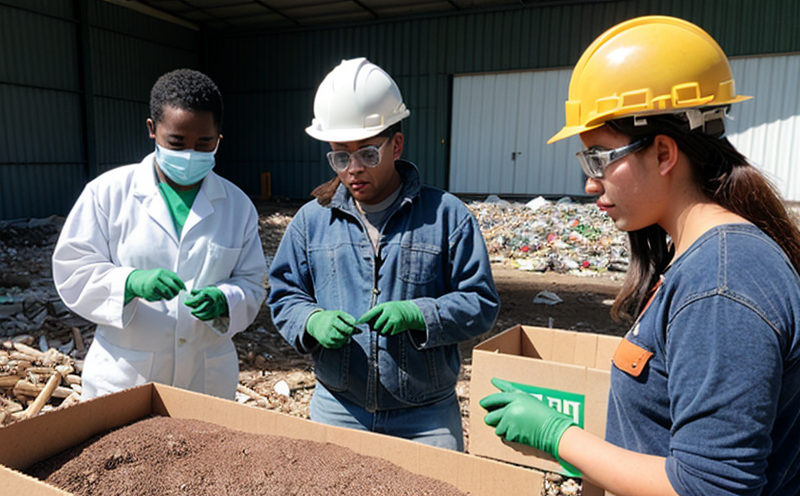EN 13428 Packaging and Material Minimization Testing
The European Standard EN 13428 focuses on material minimization in packaging, aiming to reduce the environmental impact of packaging waste while maintaining product safety and functionality. This standard is particularly relevant for toy manufacturers who are looking to comply with sustainability regulations and improve their product offerings.
Material minimization involves reducing the amount of materials used in packaging without compromising its structural integrity or effectiveness. The standard provides a framework for assessing how efficiently materials are utilized, ensuring that only necessary components contribute to the overall design. This approach not only helps in minimizing waste but also enhances resource efficiency and promotes sustainable practices.
Toy manufacturers must consider various factors when implementing EN 13428 compliance into their operations. These include understanding the scope of the standard, selecting appropriate materials, designing efficient packaging structures, and ensuring that all components meet both safety and sustainability requirements. By adhering to these guidelines, companies can contribute positively towards reducing environmental footprint without sacrificing product quality.
One key aspect of EN 13428 is its emphasis on lifecycle assessment (LCA). LCA involves evaluating the entire life cycle of a product from raw material extraction through production, distribution, use, and disposal. For packaging materials used in toys, LCAs help identify areas where improvements can be made to minimize environmental impacts throughout each stage.
Another important consideration for toy manufacturers is ensuring that their chosen materials are recyclable or easily recoverable at the end of a product's life cycle. This aligns with broader industry trends toward circular economy principles, which encourage products and components to remain in use for as long as possible before being recycled or repurposed.
When designing packaging according to EN 13428, toy manufacturers need to balance multiple factors such as cost-effectiveness, performance requirements, regulatory compliance, environmental impact reduction, and customer satisfaction. A multi-disciplinary approach involving designers, engineers, chemists, and sustainability experts is often necessary to achieve optimal results.
It's worth noting that while EN 13428 primarily deals with packaging materials, its principles extend beyond just physical attributes into broader considerations about the overall design philosophy behind packaging. Adopting a more holistic view can lead to innovations in toy manufacturing processes that benefit both the environment and business goals simultaneously.
For manufacturers aiming to comply fully with EN 13428, conducting thorough assessments early in the development process is crucial. This includes working closely with suppliers to source sustainable materials, consulting experts on best practices for material selection, participating actively in relevant industry forums, staying updated on regulatory changes, and continuously improving internal processes.
In conclusion, compliance with EN 13428 offers significant opportunities for toy manufacturers to enhance their environmental credentials while maintaining high standards of safety and performance. By embracing this standard, companies can contribute meaningfully towards global efforts aimed at protecting natural resources and promoting sustainable development.
Why It Matters
The importance of material minimization in packaging cannot be overstated, especially within sectors like toy manufacturing where consumer safety is paramount. By reducing the amount of materials used without sacrificing structural integrity or effectiveness, companies can significantly cut down on waste and reduce their environmental footprint.
- Reduced disposal costs for businesses
- Enhanced reputation among environmentally conscious consumers
- Potential cost savings due to lower material usage
- Better alignment with regulatory requirements and trends towards sustainability
- Increased competitiveness in the marketplace
- Positive impact on resource conservation efforts globally
Moreover, adhering to standards like EN 13428 demonstrates a commitment to responsible manufacturing practices. This can foster trust among customers who prioritize eco-friendly products and help build long-term relationships with environmentally focused stakeholders.
In summary, compliance with EN 13428 is not just about meeting legal requirements; it represents an opportunity for toy manufacturers to lead by example in promoting sustainable practices across the industry.
Eurolab Advantages
At Eurolab, we understand the complexities involved in achieving compliance with EN 13428. Our team of experts provides comprehensive support tailored specifically to your needs, ensuring that you not only meet but exceed regulatory expectations.
- Expertise: Our professionals have extensive experience working with international standards and guidelines related to material minimization in packaging.
- Comprehensive Services: We offer a wide range of testing services encompassing all aspects required for EN 13428 compliance, including lifecycle assessments and material evaluations.
- State-of-the-Art Facilities: Our laboratories are equipped with advanced instrumentation capable of accurately measuring various parameters relevant to material minimization.
- Consultative Approach: We work closely with clients throughout the entire process, offering guidance from initial concept stages all the way through final product release.
- Certification Support: Our services extend beyond simple testing; we assist in obtaining certifications needed to demonstrate full compliance.
- Sustainability Focus: Eurolab places great emphasis on sustainability throughout our operations, aligning perfectly with the principles outlined in EN 13428.
Partnering with us ensures that you receive expert advice and state-of-the-art facilities backed by decades of experience. Let us help you navigate through this challenging but rewarding journey towards greater efficiency and sustainability in your packaging designs.
International Acceptance and Recognition
The European Standard EN 13428 has gained significant recognition beyond its geographical boundaries, with several countries adopting or aligning their own regulations closely with this standard. The United States, Canada, Australia, Japan, China, and other nations have either incorporated similar criteria into their national standards or are in the process of doing so.
Key international standards that align with EN 13428 include:
- ASTM D7650 - Standard Practice for Measuring Material Minimization in Packaging
- ISO/TR 21937 - Guidelines on Life Cycle Assessment of Packaging and Packaging Waste
- JIS Z 1550:2018 - Environmental Management Standard for Packaging Products
- AS/NZS 4646.1:2004 - Code of Practice for the Design, Manufacture, Use and Disposal of Packaging
This widespread adoption underscores the growing importance placed on sustainable packaging practices globally. By adhering to EN 13428, toy manufacturers can ensure that their products meet not only local but also international standards, thereby expanding market reach and enhancing brand reputation.





